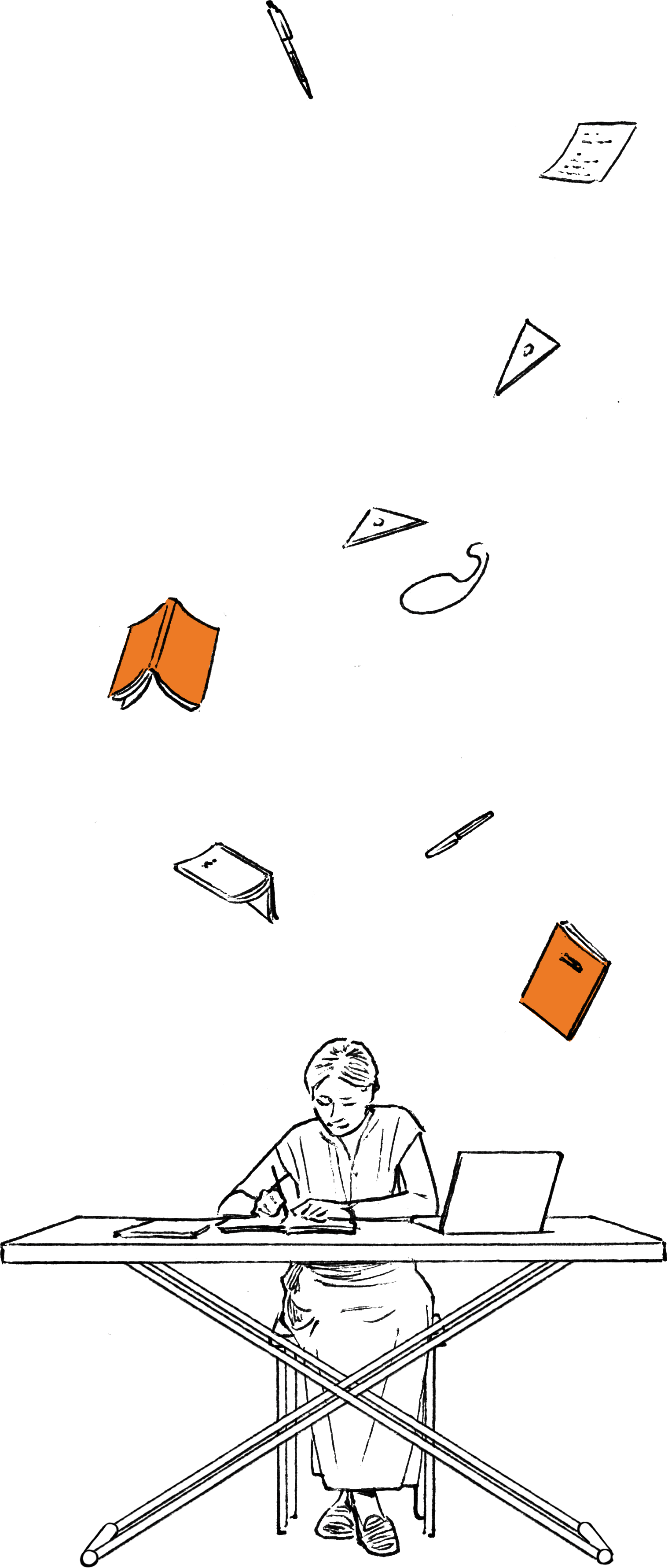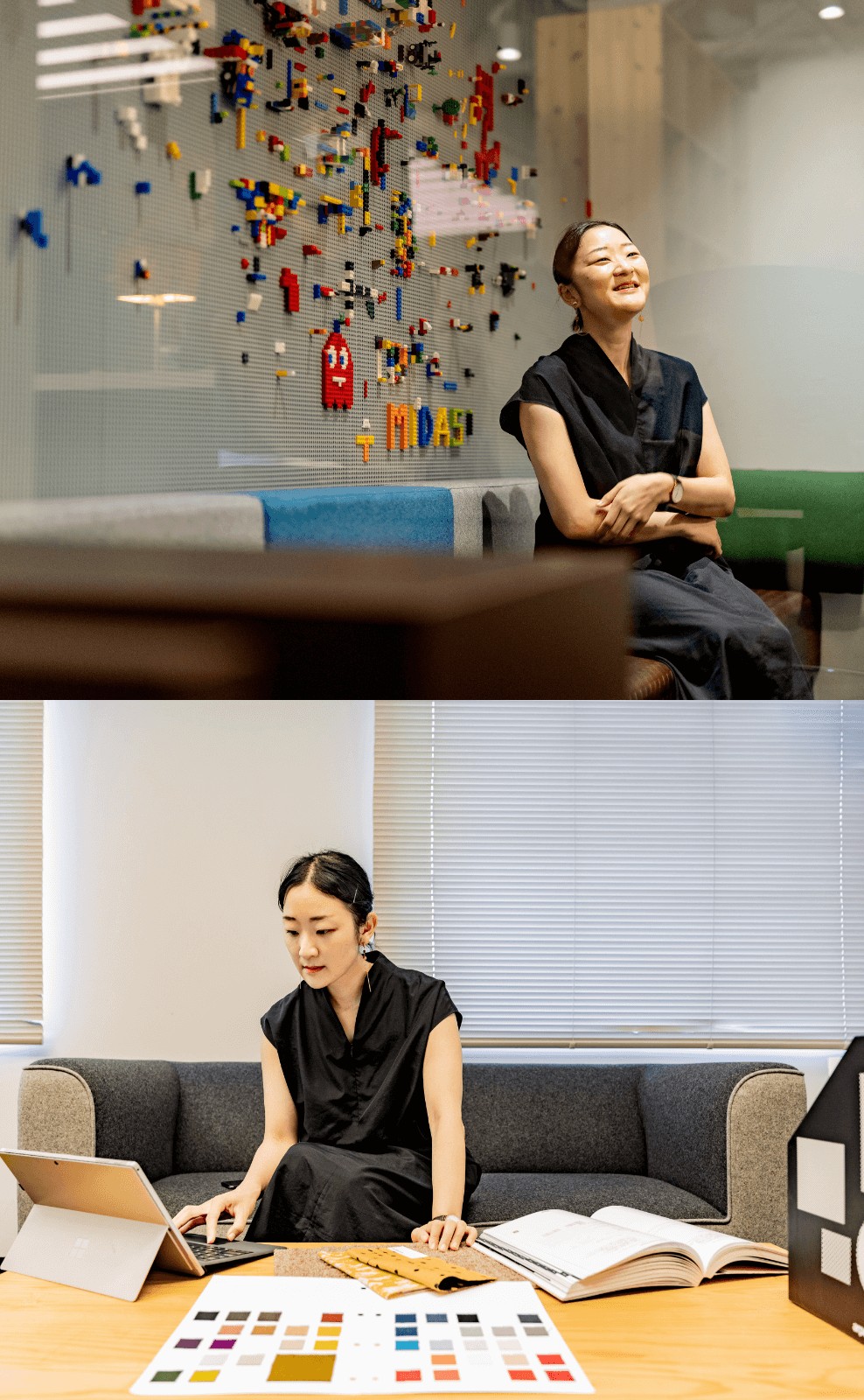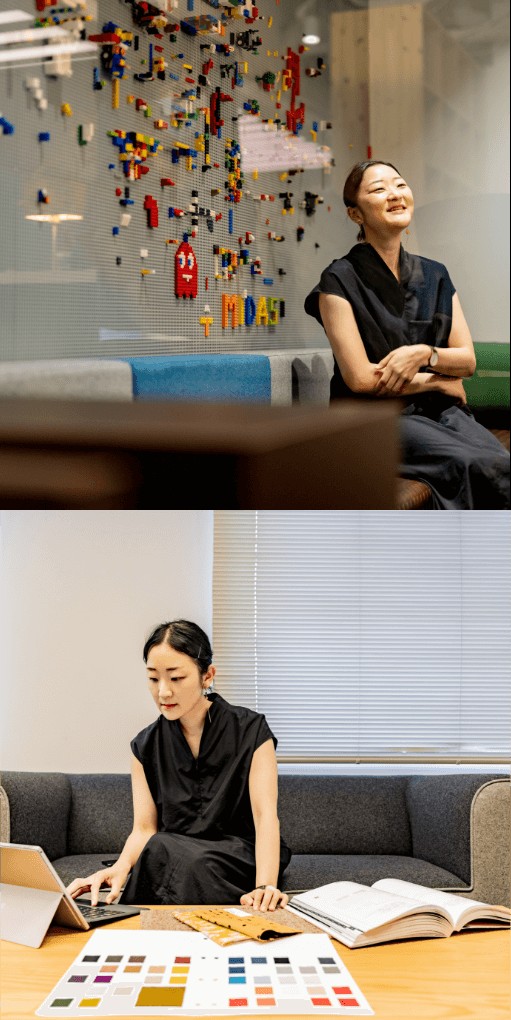Integrating ideas and dreams of people who will work in the office into a single drawing
After university, I started working as an interior designer specializing in commercial properties such as restaurants. Here at Midas, we design offices, which is very
different from designing in the commercial context. The most significant difference I find is the relationship between the client and users.
In the case of commercial properties, customers of the business are the users of the space, and the client more or less has good ideas about what they are looking for.
Whereas, in office design, the users are those who work in this space, but the commissioning client often has little idea about what their people want in their offices.
However, offices are where people spend a significant proportion of their day-to-day lives, and each person has specific ideas about what they want. It can be a
daunting process to sum up 1,000 different opinions in a drawing.
The process is never easy, but it gives me a great sense of satisfaction when the outcome is a success. Sometimes, I have positive client feedback on the work we
delivered, and I love it when they say “we’re happy to have done the office with you” with a big smile on their faces.

Dealing with the work sites and clients, every day is exciting
Briefing and debriefing on site are another challenging yet intriguing experience for interior designers. Even the most thorough design faces some problems in the field.
For example, I might design a cool shade to be installed on the ceiling, and it turns out not strong enough to be held up in place. In such a conundrum, on-site
engineers are the ones who can save me. They come up with different ideas to solve the problem, and together we work out the ways to realize the intended office design.
I find this kind of lively communication exciting, and it is also an invaluable opportunity for me to learn new things, adding to my experience as a designer.
Another exciting aspect of working at Midas is the frequent opportunities to work with international clients. I was once involved in a project for an international
pharmaceutical company, and their nonnegotiable principle was to only use “genuine items.” Even the office greenery had to be living plants. It is a common practice to
use imitations to lower costs, but the client insisted on their principle. It was interesting to be exposed to approaches so different from those conventional in Japan.
Also, international clients are more likely to be expressive of their emotions so that it is evident when they are happy with the work delivered.



